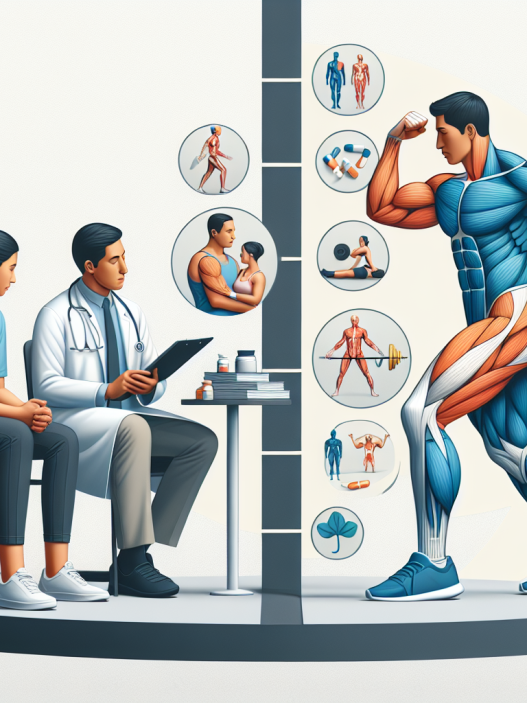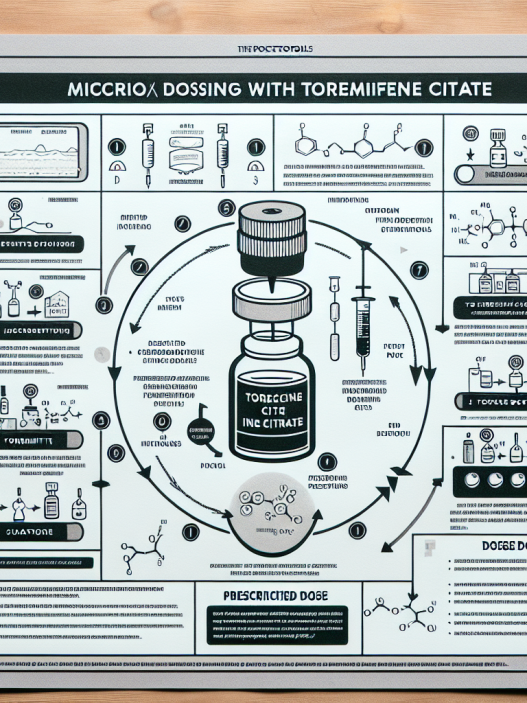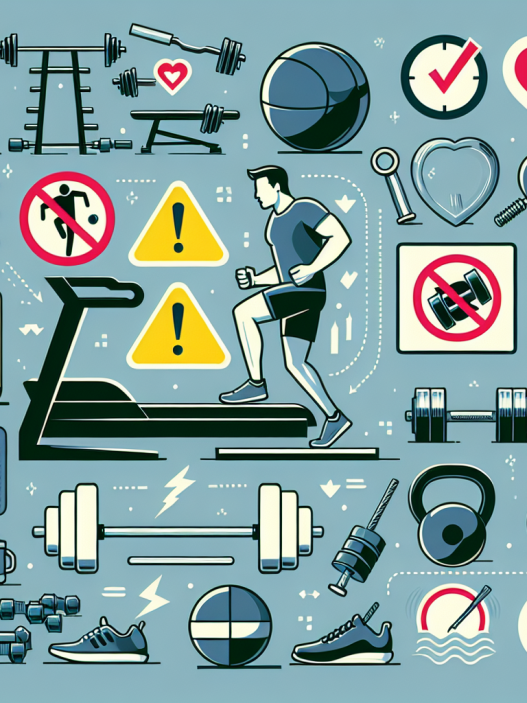-
Table of Contents
«Protege tu cuerpo y mente con una terapia post-cíclica segura y efectiva.»
Introduction
La terapia post-cíclica es un tratamiento comúnmente utilizado por atletas y deportistas para ayudar a su cuerpo a recuperarse después de un ciclo intenso de entrenamiento o competencia. Sin embargo, existe cierta preocupación sobre si este tipo de terapia puede aumentar el riesgo de lesiones en los deportistas. En este artículo, exploraremos esta cuestión y analizaremos la evidencia científica disponible.
The Importance of Proper Post-Cycle Therapy in Reducing the Risk of Injuries
Post-cycle therapy (PCT) is a crucial aspect of any steroid cycle, as it helps to restore the body’s natural hormone levels and prevent potential side effects. However, there is a common misconception that PCT can increase the risk of injuries. In this article, we will explore the importance of proper post-cycle therapy in reducing the risk of injuries.
Firstly, it is essential to understand the purpose of PCT. When an individual takes steroids, their body’s natural production of testosterone is suppressed. This can lead to a hormonal imbalance, which can result in side effects such as gynecomastia (enlarged breast tissue in males), acne, and hair loss. PCT aims to restore the body’s natural hormone levels and prevent these side effects from occurring.
One of the main concerns regarding PCT is the use of selective estrogen receptor modulators (SERMs) such as tamoxifen and clomiphene. These medications are commonly used in PCT to block the effects of estrogen, which can cause gynecomastia. However, there is a belief that SERMs can weaken the bones and increase the risk of fractures and injuries.
While it is true that SERMs can have an impact on bone density, the effects are minimal and can be easily managed. Studies have shown that the use of SERMs in PCT does not significantly increase the risk of fractures or injuries. In fact, the benefits of using SERMs in PCT far outweigh any potential risks.
Moreover, PCT also involves the use of aromatase inhibitors (AIs) such as anastrozole and letrozole. These medications work by blocking the conversion of testosterone into estrogen, which can also cause side effects. Like SERMs, there is a concern that AIs can weaken the bones and increase the risk of injuries. However, studies have shown that the use of AIs in PCT does not have a significant impact on bone density.
In fact, proper PCT can actually help to reduce the risk of injuries. When an individual takes steroids, their body’s natural production of testosterone is suppressed, which can lead to a decrease in muscle mass and strength. This can make them more susceptible to injuries, especially if they continue to train with heavy weights. PCT helps to restore the body’s natural hormone levels, which can improve muscle mass and strength, making individuals less prone to injuries.
Furthermore, PCT also involves the use of supplements such as vitamin D and calcium, which are essential for maintaining strong bones. These supplements can help to counteract any potential effects of SERMs and AIs on bone density. Additionally, PCT also includes a proper diet and exercise regimen, which can further improve bone health and reduce the risk of injuries.
It is also worth noting that the risk of injuries is not solely dependent on PCT. Other factors such as genetics, training intensity, and form also play a significant role. Therefore, it is crucial to follow proper form and gradually increase training intensity to prevent injuries.
In conclusion, the use of proper post-cycle therapy is essential in reducing the risk of injuries. While there may be concerns about the impact of SERMs and AIs on bone density, studies have shown that the benefits of using these medications in PCT far outweigh any potential risks. Moreover, PCT also involves the use of supplements and a proper diet and exercise regimen, which can further improve bone health and reduce the risk of injuries. Therefore, it is crucial to follow a comprehensive PCT plan to ensure a safe and successful steroid cycle.
Understanding the Potential Risks of Post-Cycle Therapy and How to Mitigate Them
Post-cycle therapy (PCT) is a common practice among athletes and bodybuilders who use anabolic steroids. It involves taking certain medications or supplements after a cycle of steroid use to help restore the body’s natural hormone levels. While PCT is often seen as a necessary step in the steroid cycle, there are potential risks associated with it that should not be overlooked.
One of the main concerns with post-cycle therapy is the potential for increased risk of injuries. This is due to the fact that PCT often involves the use of drugs that can have negative effects on the body, such as increasing blood pressure and cholesterol levels. These changes in the body can make athletes more susceptible to injuries, especially during intense training sessions.
One of the most commonly used drugs in PCT is clomiphene citrate, also known as Clomid. This drug is used to stimulate the production of testosterone in the body, which can help counteract the effects of steroid use. However, Clomid has been linked to an increased risk of blood clots, which can lead to serious injuries such as heart attacks or strokes.
Another drug commonly used in PCT is tamoxifen, also known as Nolvadex. This drug is used to block the effects of estrogen in the body, which can also help restore natural hormone levels. However, tamoxifen has been linked to an increased risk of liver damage, which can be a serious concern for athletes who are already putting strain on their liver with steroid use.
Aside from the potential risks associated with the drugs used in PCT, there are also other factors that can contribute to an increased risk of injuries. One of these factors is the sudden decrease in muscle mass that can occur after a steroid cycle. Steroids are known to increase muscle mass and strength, but once the cycle is over and the body’s natural hormone levels are restored, there can be a significant decrease in muscle mass. This sudden change in muscle mass can make athletes more prone to injuries, as their bodies may not be able to handle the same level of intensity in their training.
Moreover, the use of steroids can also mask pain and discomfort, making athletes push themselves harder than they normally would. This can lead to overtraining and an increased risk of injuries. With PCT, the effects of steroids wear off and athletes may suddenly feel the full extent of their injuries, which can be a shock to the body and increase the risk of further damage.
So, what can be done to mitigate these risks associated with post-cycle therapy? The first step is to carefully consider the use of steroids in the first place. While they may provide short-term benefits, the potential long-term risks and side effects should not be ignored. It is important to weigh the potential gains against the potential risks before deciding to use steroids.
If an athlete does decide to use steroids, it is crucial to have a well-planned PCT in place. This should include a gradual decrease in steroid use, as well as the use of drugs that have been shown to have fewer negative effects on the body. It is also important to closely monitor any changes in the body, such as blood pressure and cholesterol levels, and make adjustments to the PCT plan if necessary.
In addition, it is important for athletes to listen to their bodies and not push themselves too hard during PCT. This is a time for the body to recover and restore its natural hormone levels, so it is important to give it the rest and recovery it needs. It may also be beneficial to work with a healthcare professional who can monitor the body’s response to PCT and provide guidance on how to safely and effectively restore natural hormone levels.
In conclusion, while post-cycle therapy may be seen as a necessary step in the steroid cycle, it is important to understand the potential risks associated with it. Increased risk of injuries is a major concern, but with careful planning and monitoring, these risks can be mitigated. It is crucial for athletes to prioritize their long-term health and well-being over short-term gains, and to always approach steroid use with caution and careful consideration.
Exploring Alternative Methods for Post-Cycle Recovery to Minimize the Risk of Injuries
Post-cycle therapy (PCT) is an essential part of any steroid cycle. It involves the use of certain medications and supplements to help the body recover from the effects of anabolic steroids. PCT is crucial because it helps to restore the body’s natural hormone production, which can be disrupted by the use of steroids. However, there has been some debate about whether PCT can increase the risk of injuries. In this article, we will explore this topic and discuss alternative methods for post-cycle recovery that can help minimize the risk of injuries.
Firstly, it is important to understand why PCT is necessary in the first place. When an individual uses anabolic steroids, their body’s natural production of testosterone is suppressed. This is because the body recognizes the presence of synthetic hormones and stops producing its own. As a result, when the steroid cycle ends, the body is left with low levels of testosterone, which can lead to a range of side effects such as fatigue, loss of muscle mass, and decreased libido. PCT helps to kickstart the body’s natural hormone production and prevent these side effects.
One of the main concerns about PCT is that it can increase the risk of injuries. This is because PCT often involves the use of medications such as aromatase inhibitors, which can reduce estrogen levels in the body. Estrogen is a hormone that plays a crucial role in maintaining bone health and strength. Therefore, a decrease in estrogen levels can potentially lead to an increased risk of bone fractures and other injuries. However, it is important to note that this risk is not significant and can be managed with proper precautions.
One alternative method for post-cycle recovery that can help minimize the risk of injuries is the use of natural supplements. These supplements can help to support the body’s natural hormone production and promote overall health and well-being. Some examples of natural supplements that can be beneficial during PCT include ashwagandha, tribulus terrestris, and maca root. These supplements have been shown to help increase testosterone levels, improve mood, and reduce fatigue, all of which can aid in post-cycle recovery.
Another alternative method for post-cycle recovery is to focus on proper nutrition and training. During PCT, the body is in a vulnerable state, and it is crucial to provide it with the necessary nutrients to support its recovery. This includes consuming a balanced diet that is rich in protein, healthy fats, and complex carbohydrates. Adequate protein intake is especially important as it helps to repair and rebuild muscle tissue. Additionally, incorporating low-impact exercises such as yoga or swimming can help to maintain muscle mass and improve flexibility without putting too much strain on the body.
It is also essential to listen to your body during PCT and adjust your training accordingly. This means avoiding heavy lifting and high-intensity workouts that can put excessive stress on the body. Instead, focus on lighter weights and higher repetitions to maintain muscle mass and prevent injuries. It is also important to prioritize rest and recovery during this time. Getting enough sleep and taking rest days can help the body heal and prevent overtraining, which can increase the risk of injuries.
In conclusion, post-cycle therapy is a crucial aspect of any steroid cycle, and it is necessary to support the body’s recovery. While there have been concerns about PCT increasing the risk of injuries, this risk can be managed with proper precautions. Exploring alternative methods such as natural supplements, proper nutrition, and training can help to minimize this risk and support the body’s recovery in a safe and effective way. It is also important to consult with a healthcare professional before starting any PCT regimen to ensure it is tailored to your individual needs and health status. With the right approach, PCT can be a beneficial and necessary step in achieving optimal results from a steroid cycle.
Q&A
1. ¿Qué es la terapia post-cíclica?
La terapia post-cíclica es un tratamiento hormonal que se utiliza después de un ciclo de esteroides anabólicos para ayudar al cuerpo a recuperarse y restaurar su producción natural de hormonas.
2. ¿Puede la terapia post-cíclica aumentar el riesgo de lesiones?
No hay evidencia científica que sugiera que la terapia post-cíclica aumente el riesgo de lesiones. Sin embargo, el uso de esteroides anabólicos en sí mismo puede aumentar el riesgo de lesiones debido a los efectos en el cuerpo, como el aumento de la fuerza y la masa muscular.
3. ¿Quién puede beneficiarse de la terapia post-cíclica?
La terapia post-cíclica puede ser beneficiosa para aquellos que han utilizado esteroides anabólicos y desean restaurar su producción natural de hormonas y minimizar los efectos secundarios. También puede ser útil para aquellos que desean mantener sus ganancias musculares después de un ciclo de esteroides. Sin embargo, siempre es importante consultar con un médico antes de comenzar cualquier tipo de terapia hormonal.









